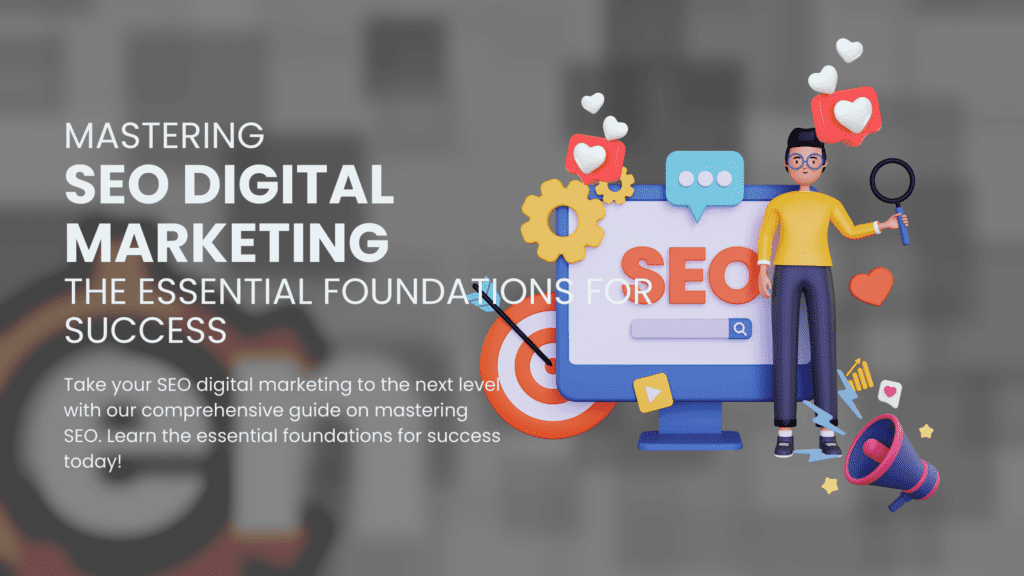
SEO digital marketing is an essential aspect of online advertising that can help businesses improve their visibility and reach. With the rise of digital media, companies are looking for ways to increase their online presence and attract more customers. In this blog post, we will explore the different types of SEO strategies that can be used to improve a website’s ranking on search engines.
Site SEO involves optimizing a website’s structure, content, and keywords to make it more search engine-friendly. This includes using relevant keywords in page titles, meta descriptions, and header tags. Technical SEO focuses on improving the website’s backend elements such as site speed, mobile-friendliness, and security. By ensuring that a website is technically sound, businesses can improve their chances of ranking higher on search engines.
Local SEO is essential for businesses that want to target customers in a specific geographic location. This involves creating local business listings on directories such as Google My Business and Yelp. By optimizing these listings with accurate information about the business’ address, phone number, and hours of operation, companies can increase their chances of being found by potential customers.
Page SEO involves optimizing individual pages on the website to improve their ranking and relevance for specific keywords. Thƒis includes using internal linking strategies to connect related pages together and creating high-quality content that is optimized for specific keywords.
Search marketing encompasses both SEO and paid advertising efforts to increase a brand’s online reach and visibility. By combining these two strategies together, businesses can create a comprehensive digital marketing campaign that targets potential customers across multiple channels.
In addition to traditional SEO techniques such as keyword research and link building, social media has become an increasingly important factor in digital marketing campaigns. By creating engaging content that resonates with target audiences on platforms such as Facebook, Twitter or Instagram; brands can build relationships with potential customers while also increasing their online reach.
Defining Search Engine Optimization (SEO) and Offsite Optimization
SEO and Offsite Optimization: A Comprehensive Guide
Search engine optimization (SEO) is the process of optimizing a website to rank higher in search engine results pages (SERPs).
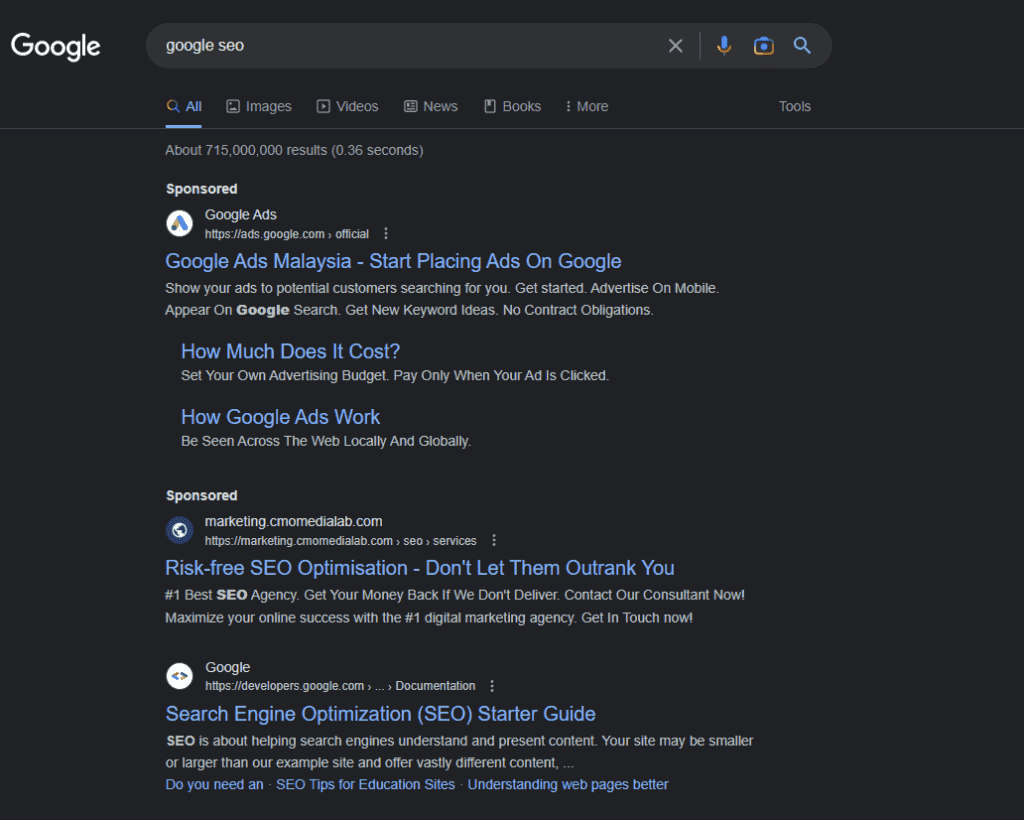
It involves both onsite and offsite optimization techniques. In this post, we will focus on offsite optimization, which refers to the techniques used to improve a website’s visibility and authority through external sources.
Link Building: The Backbone of Offsite Optimization
One of the most important offsite optimization techniques is link building. Link building involves acquiring links from other websites to your own. These links are like votes for your website, indicating to search engines that other websites consider your content valuable and relevant.
However, not all links are created equal. Search engines value quality over quantity it’s important to focus on building high-quality backlinks.
There are several ways to acquire backlinks:
- Guest blogging: Writing guest posts for other blogs in your industry can help you earn backlinks.
- Broken link building: Finding broken links on other websites and offering them a replacement link can help you earn backlinks.
- Influencer outreach: Reaching out to influencers in your industry or niche and asking them to share your content can help you earn backlinks.
Social Media Marketing: Increasing Brand Awareness
Social media marketing is another effective offsite optimization technique. Social media platforms like Facebook, Twitter, Instagram, LinkedIn, and Pinterest can increase brand awareness and drive traffic to your website.
When using social media for offsite optimization purposes, it’s important to choose the right platforms for your business. For example, if you’re a B2B company targeting professionals, LinkedIn might be a better platform than Instagram.
Local SEO: Attracting Nearby Customers
Local SEO is another important aspect of offsite optimization. Local SEO involves optimizing your website and online presence to appear in local search results. This is particularly important for businesses that rely on foot traffic or local customers.
Understanding SEO Digital Marketing
Keyword Research: Finding the Right Words
To start with SEO digital marketing, you need to find the right keywords. Keyword research is an essential part of SEO digital marketing because it helps you understand what your potential customers are searching for in search engines. By identifying these keywords and phrases, you can optimize your website’s content to rank higher in search engine results pages (SERPs).
There are many tools available for keyword research, such as Google Keyword Planner, Ahrefs, SEMrush, and SurgeGraph. These tools can help you identify relevant keywords and phrases that have high search volume and low competition.
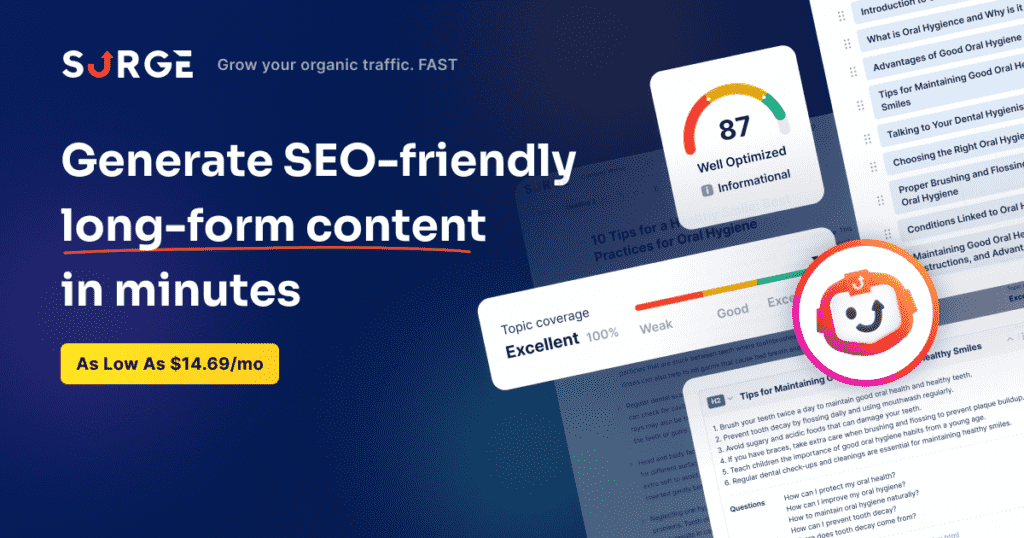
When conducting keyword research, it’s important to consider the intent behind each keyword or phrase.
For example, if someone searches for “best coffee shops,” their intent may be to find a place to grab a cup of coffee nearby.
On the other hand, if someone searches for “how to make coffee,” their intent may be to learn how to brew coffee at home.
Once you’ve identified relevant keywords and phrases, you can use them throughout your website’s content. However, it’s important not to overuse them or engage in “keyword stuffing,” which can hurt your website’s ranking.
On-Page Optimization: Making Your Website Relevant
On-page optimization involves optimizing the content on your website’s pages so that they are more relevant and valuable to search engines. This includes optimizing meta tags (such as title tags and meta descriptions), headers (H1-H6), images (alt text), internal linking structure and URLs.
One key aspect of on-page optimization is creating high-quality content that provides value to your audience. This means writing long-form articles with over 3,000 words that cover topics in-depth while still being engaging and easy-to-read.
Another important factor is ensuring that your website is mobile-friendly since most people now access websites through their smartphones rather than desktop computers.
Off-Page Optimization: Building Authority
Off-page optimization involves building authority for your website through backlinks from other reputable websites. Backlinks are links from other websites that point to your website, indicating that your content is valuable and relevant.
One way to build backlinks is by creating high-quality content that other websites will want to link to. This can include writing guest posts for other blogs or creating infographics that other websites can embed on their own pages.
Another strategy is reaching out to other website owners and asking them to link back to your content. However, it’s important not to engage in “black hat” SEO tactics such as buying backlinks or engaging in link schemes, which can result in penalties from search engines.
Technical SEO: Ensuring Your Website Is Search Engine-Friendly
Technical SEO involves ensuring that your website’s technical elements are optimized for search engines. This includes optimizing page speed, fixing broken links, using schema markup for structured data and ensuring that your website has a sitemap.xml file.
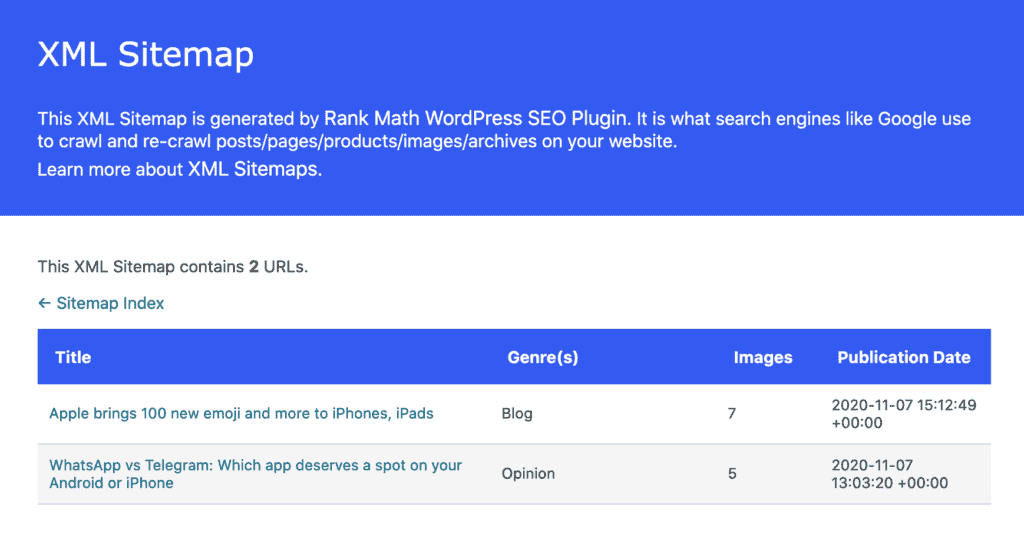
One key aspect of technical SEO is ensuring that your website is secure with an SSL certificate. This helps protect user data and improves trustworthiness with both users and search engines.
Importance of SEO for Modern Businesses
Why SEO is Crucial for Modern Businesses
SEO changes regularly, and businesses need to keep up with the latest trends and techniques to ensure their website remains visible to potential customers. With more people relying on search engines to find products and services, businesses that neglect SEO risk losing out on potential customers to competitors who have invested in it. In this section, we will discuss why SEO is crucial for modern businesses.
Driving Traffic
One of the most significant benefits of SEO is its ability to drive traffic to a business’s website. By optimizing their website for search engines, businesses can attract more people to their site and increase their chances of converting them into paying customers. For example, if a person searches for “best coffee shops near me,” the coffee shops that appear at the top of the search engine results page are more likely to get clicks than those that appear lower down.
Increasing Visibility
SEO also helps businesses build credibility and trust with their audience by appearing at the top of search engine results pages. When people see a business at the top of the search engine results page, they assume that it must be relevant and trustworthy because Google or other search engines have ranked it as such. This increased visibility can lead to more clicks, which can ultimately result in higher revenue.
Boosting Revenue
Ultimately, SEO is essential for boosting revenue. By driving traffic and increasing visibility, businesses can attract more customers who are interested in their products or services. This increased traffic can lead to higher conversion rates and ultimately result in higher revenue for the business.
Case Study: How One Business Increased Revenue Through SEO
A study by Moz found that one business was able to increase its organic traffic by 300% in just six months through an effective SEO strategy. The business optimized its website content with keywords related to its industry and created high-quality backlinks from reputable websites. As a result, it saw a significant increase in organic traffic, which led to higher conversion rates and ultimately, higher revenue.
How SEO Works in Digital Marketing: Understanding Search Engines
How Search Engines Work: A Beginner’s Guide to SEO
Search engine optimization (SEO) is a crucial component of digital marketing. It involves optimizing a website to rank higher in organic search results. But how does SEO work, and why is it important for businesses? In this guide, we’ll explore the basics of how search engines work and how you can use SEO to improve your website’s visibility.
Understanding Organic Search Results
When you perform a search on Google or another search engine, you’re presented with two types of results: paid and organic. Paid results are ads that businesses pay for to appear at the top of the page. Organic results, on the other hand, are unpaid listings that appear based on their relevance to the user’s search query.
Organic search results are determined by complex algorithms that take into account hundreds of factors. These algorithms analyze everything from the content on a website to its backlink profile and social media presence. By understanding these factors, businesses can optimize their websites to rank higher in organic search results.
How Search Engines Determine Relevance
Search engines use crawlers or spiders to scan websites and collect information about their content. This information is then analyzed using complex algorithms that determine which websites are most relevant to a particular search query.
One of the most important factors that search engines consider when determining relevance is keywords. Keywords are words or phrases that people use when searching for something online. By including relevant keywords in your website’s content, you can signal to search engines what your website is about and improve its chances of ranking higher in organic search results.
Other factors that influence relevance include:
- Content quality: Search engines favor high-quality content that provides value to users.
- Backlinks: The number and quality of links pointing back to your website can indicate its authority and credibility.
- Social media signals: Likes, shares, and comments on social media platforms can indicate popularity and engagement.
- User experience: Search engines favor websites that are easy to navigate and provide a good user experience.
Optimizing Your Website for SEO
To optimize your website for SEO, you need to focus on several key areas. These include:
- Keyword research: Identify the keywords and phrases that people use when searching for products or services related to your business.
- On-page optimization: Optimize your website’s content, including headlines, meta descriptions, and alt tags, to include relevant keywords.
- Off-page optimization: Build high-quality backlinks from reputable sources to improve your website’s authority and credibility.
- Social media marketing: Use social media platforms to promote your content and engage with your audience.
By focusing on these areas, businesses can improve their website’s visibility in organic search results and drive more traffic to their site.
Different Types of Search Queries
Types of Search Queries
Search queries are the words or phrases that a searcher types into a search engine to find information, products, or services. Understanding the different types of search queries can help you optimize your website content and improve your search experience. In this section, we will discuss the three main types of search queries: informational, navigational, and transactional.
Informational Queries
Informational queries seek answers to questions. These queries are usually in the form of a question or a phrase that begins with “how,” “what,” “when,” “where,” or “why.”
For example, “how to make pizza dough” or “what is the capital of France?” The searcher is looking for information on a particular topic and wants to learn more about it.
When creating content for informational queries, it’s important to provide detailed and informative articles that answer the searcher’s question. Use long-tail keywords that match the searcher’s query and include related topics in your content. This will increase your chances of appearing in Google’s featured snippets and other rich snippets.
Navigational Queries
Navigational queries aim to find a specific website or page. These searches are usually brand-related and use specific keywords such as the brand name or product name. For example, “Nike shoes” or “Amazon login.” The searcher already knows what they are looking for but needs help finding it.
When optimizing for navigational queries, ensure that your website is easy to navigate and has clear navigation menus. Include relevant keywords in your website’s title tags and meta descriptions so that Google can easily understand what your website is about.
Transactional Queries
Transactional queries intend to complete a task or purchase. These searches are usually commercial in nature and include keywords like “buy,” “purchase,” “order,” “discount,” etc.
For example, “buy Nike shoes online” or “order pizza delivery near me.”
When optimizing for transactional queries, ensure that your website has clear calls-to-action and easy-to-use shopping carts. Include pricing information, product descriptions, and reviews to help the searcher make an informed decision.
Short-tail vs Long-tail Keywords
Searchers use different types of keywords in their search queries, including short-tail and long-tail keywords. Short-tail keywords are broad and general, while long-tail keywords are more specific and targeted.
Short-tail keywords are usually one or two words that describe a topic broadly.
For example, “pizza” or “shoes.” These searches have high search volume but also high competition.
Long-tail keywords are longer phrases that describe a topic in more detail. For example, “how to make pizza dough without yeast” or “Nike running shoes for women.” These searches have lower search volume but also lower competition.

When optimizing for both short-tail and long-tail keywords, ensure that your content is relevant to the searcher’s query. Use keyword research tools like Google Keyword Planner to find relevant keywords with high search volume and low competition.
Benefits and Types of SEO in Digital Marketing
Types of SEO: On-Page and Off-Page
On-page SEO is the process of optimizing individual web pages to rank higher in search engine results. This type of optimization includes optimizing content, meta tags, images, and URLs to improve the website’s relevance and authority. By optimizing these elements, businesses can increase their online visibility and attract more traffic to their website.
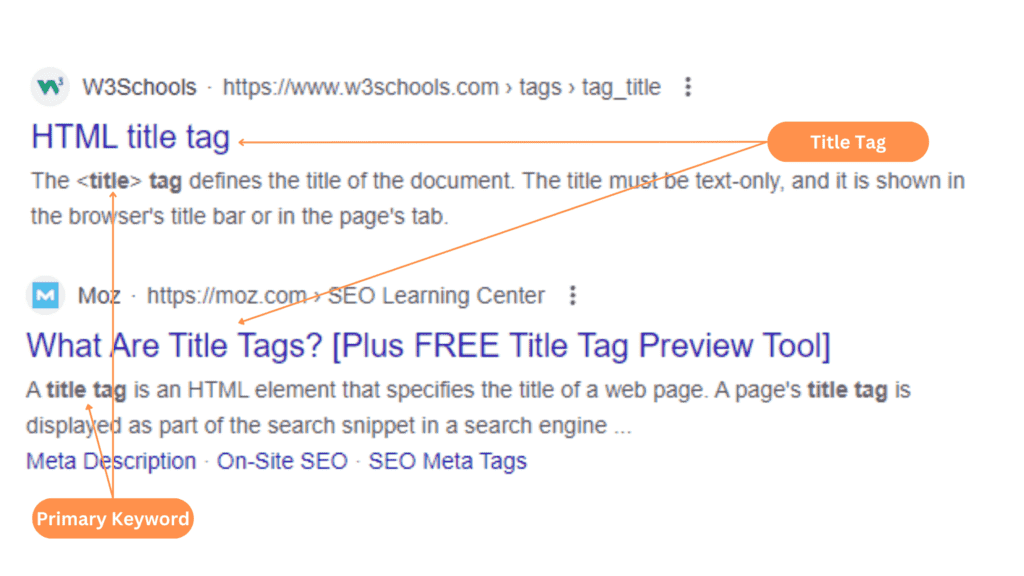
One important aspect of on-page SEO is keyword research. Businesses need to identify relevant keywords that are frequently searched by their target audience. They can then incorporate these keywords into their content and meta tags to increase the relevance of their website for those specific keywords.
Another important factor in on-page SEO is content optimization. Businesses should create high-quality content that provides value to their audience while also incorporating relevant keywords. They should ensure that their content is well-organized with headings, subheadings, and bullet points to make it easy for readers (and search engines) to understand.
Off-page SEO refers to tactics used outside of a website to improve its ranking in search engine results. One key tactic in off-page SEO is link building. This involves getting other websites to link back to your website, which signals to search engines that your site is credible and authoritative.
Social media marketing is another important aspect of off-page SEO. By promoting your website through social media channels like Facebook, Twitter, and LinkedIn, you can increase its visibility and attract more traffic.
Benefits of Effective SEO Strategies
Effective SEO strategies can provide numerous benefits for businesses looking to improve their online presence:
Onpage, Offpage, and Technical SEO Techniques
Onpage SEO Techniques
Optimizing the content and structure of a website’s web pages is the main focus of on-page SEO techniques. The goal is to improve its ranking on search engine results pages (SERPs) by making it easier for search engines to understand what your page is about. Here are some on-page optimization techniques that you can use:
- Keyword Research: Understanding which keywords your target audience uses when searching for products or services similar to yours is crucial. Once you have identified these keywords, incorporate them into your content in a natural way.
- Title Tags: The title tag should be descriptive and include one or two relevant keywords. It should also be under 60 characters so that it doesn’t get truncated in SERPs.
- Meta Descriptions: A meta description provides a brief summary of what the page is about. It should be under 155 characters and include one or two relevant keywords.
- Header Tags: Use header tags (H1, H2, H3) to break up your content into sections and make it easier to read. Include relevant keywords in your headers where appropriate.
- Content Optimization: Write high-quality content that provides value to your readers while incorporating relevant keywords naturally throughout the text.
Offpage SEO Techniques
Off-page SEO involves activities outside of your website that aim to increase its visibility and authority through link building, social media marketing, and other promotional activities. Here are some off-page optimization techniques:
- Link Building: Acquiring backlinks from authoritative websites can help increase your website’s authority in the eyes of search engines. However, it’s important to focus on quality over quantity when building links as low-quality links can actually hurt your rankings.
- Social Media Marketing: Sharing your content on social media platforms can help increase its visibility and drive traffic back to your website.
- Influencer Outreach: Partnering with influencers in your industry can help increase your website’s visibility and authority.
Technical SEO Techniques
Technical SEO optimization involves improving the website’s performance, security, and accessibility to web crawlers to ensure that it is easily indexed by search engines. Here are some technical optimization techniques:
Analyzing, Assessing, and Reporting on Performance
Quality is the foundation of any successful business. In order to ensure quality work processes, it is important to analyze and assess transactional data accuracy. This can be done by monitoring key performance metrics such as traffic, revenue, and ranking. By focusing resources on high-performing channels and adjusting strategy over time, businesses can maximize sales.
Visibility and algorithm changes are constantly occurring in the digital marketing world. It is crucial to stay up-to-date with these changes in order to adjust strategy for improved ranking and revenue. Utilizing crawling tools can help track goal progress and display performance metrics. By analyzing this data regularly, businesses can make informed decisions about where to focus their efforts.
News stories provide a unique opportunity for businesses to increase their share of voice and drive traffic. Monitoring news stories relevant to your industry allows you to identify opportunities for content creation or promotion that will resonate with your audience. By staying ahead of the curve on breaking news stories, businesses can establish themselves as thought leaders in their field.
Reporting on performance is an essential part of any digital marketing strategy. Displaying performance metrics in an easy-to-understand format allows stakeholders to see progress towards goals over time. This information can also be used to make informed decisions about where to allocate resources moving forward.
Key Points for Successful SEO Digital Marketing
To achieve success in SEO digital marketing, it is important to have a clear understanding of the key elements that contribute to an effective strategy. By following best practices and focusing on specific objectives, businesses can improve their market share and drive organic results.
One of the most important aspects of SEO digital marketing is content marketing. This involves creating high-quality, informative content that is tailored to the target audience. By providing valuable information that meets the needs of potential customers, businesses can establish themselves as authorities in their field and build trust with their audience.
Another key element of successful SEO digital marketing is a well-defined strategy. This involves setting clear objectives and identifying the tactics that will be used to achieve them. By having a solid plan in place, businesses can ensure that they are making progress towards their goals and staying on track.
In addition to these elements, there are several best practices that should be followed when implementing an SEO strategy. These include optimizing for keywords, using meta descriptions and title tags effectively, and incorporating multimedia content such as images and videos into web pages.
It is also important to understand how search engines work in order to optimize for them effectively. This includes understanding different types of search queries and how they relate to user intent.
When assessing performance in SEO digital marketing, it is important to look beyond just rankings. Other factors such as click-through rates (CTRs) and knowledge card appearances can provide valuable insights into how well a website is performing.
Finally, it is worth noting that while PPC advertising can be effective in driving traffic to a website quickly, it should not be relied upon as the sole source of traffic. Organic results remain an important part of any successful SEO strategy.
By following these key points for successful SEO digital marketing – including
- focusing on content marketing
- having a clear strategy with defined objectives
- following best practices for optimization
- understanding search engines and assessing performance holistically – businesses can improve their online presence and drive results.






